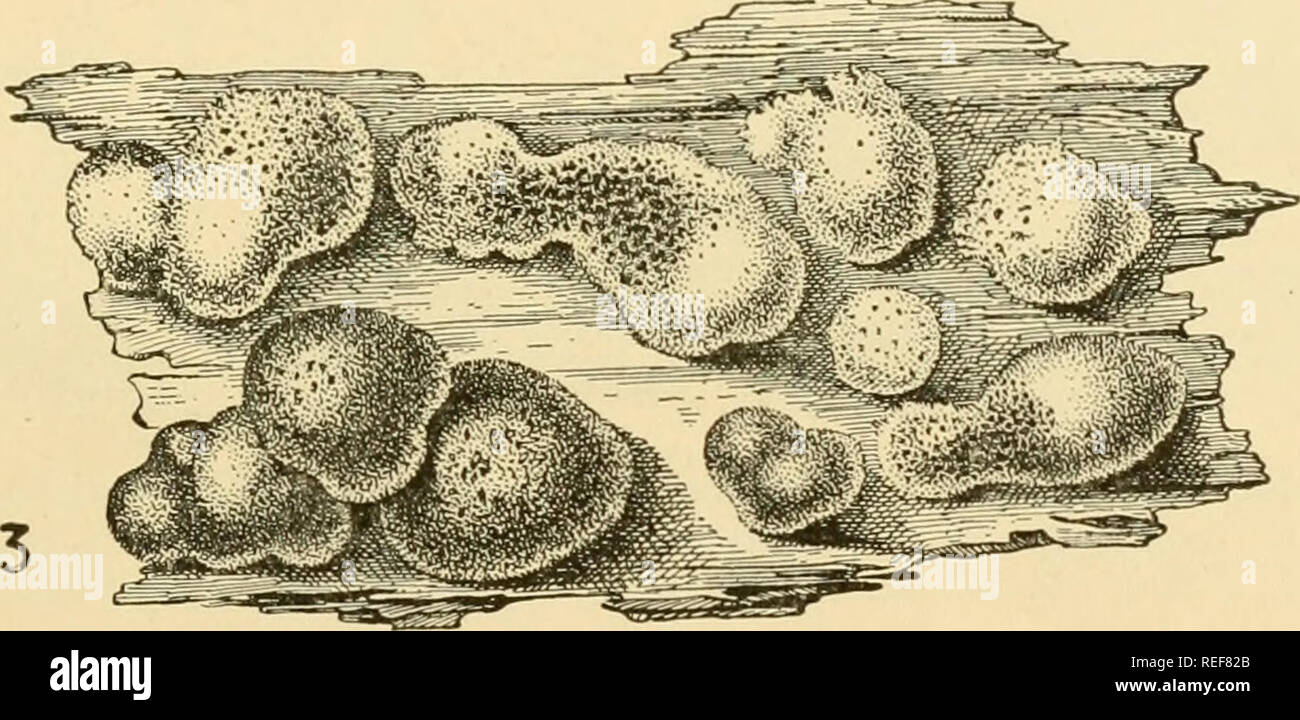. Comparative morphology of Fungi. Fungi. Fig. 154.—Hypocrea rufa. 1, 2. Sections through poorly and well-developed specimens. 3. Habit. (Natural size; after Tulasne.) often confluent cushions (Fig. 154, 3). Under favorable conditions of nourishment they are raised from the substrate by slight stipes and then become differentiated into sterile portions directed toward the substrate, and fertile portions directed away (Fig. 154, 2). The conidia of this species cover the cultures with a greenish powder (Trichoderma viride). They show a change in color similar to that of the conidia of numerous o

Image details
Contributor:
The Book Worm / Alamy Stock PhotoImage ID:
REF82BFile size:
7.1 MB (420.5 KB Compressed download)Releases:
Model - no | Property - noDo I need a release?Dimensions:
2269 x 1101 px | 38.4 x 18.6 cm | 15.1 x 7.3 inches | 150dpiMore information:
This image is a public domain image, which means either that copyright has expired in the image or the copyright holder has waived their copyright. Alamy charges you a fee for access to the high resolution copy of the image.
This image could have imperfections as it’s either historical or reportage.
. Comparative morphology of Fungi. Fungi. Fig. 154.—Hypocrea rufa. 1, 2. Sections through poorly and well-developed specimens. 3. Habit. (Natural size; after Tulasne.) often confluent cushions (Fig. 154, 3). Under favorable conditions of nourishment they are raised from the substrate by slight stipes and then become differentiated into sterile portions directed toward the substrate, and fertile portions directed away (Fig. 154, 2). The conidia of this species cover the cultures with a greenish powder (Trichoderma viride). They show a change in color similar to that of the conidia of numerous other Hypocreales changing from greenish on acid to yellow on alkaline media (Milburn, 1904). In a closely related segregate, Hypocreopsis lichenoides (Hypocrea par- melioides, Hypocreopsis riccioidea) and H. Rhododendri, the stroma devel- ops centrifugally into thick, subdichotomous lobes, resembling Parmelia physodes. The perithecia are confined to the upper, outer surface and are progressively developed as the lobes extend outward (Thaxter, 1922).. Please note that these images are extracted from scanned page images that may have been digitally enhanced for readability - coloration and appearance of these illustrations may not perfectly resemble the original work.. Gäumann, Ernst Albert, 1893-1963; Dodge, Carroll William, 1895-. New York [etc. ] McGraw-Hill Book Company, Inc.